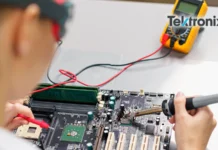With each passing day, the world’s reliance on power grows. Our need for a dependable and effective power supply increases as our homes, communities, and industries expand. Systems for intelligent power distribution can be useful in this situation. The way we generate, distribute, and use electricity is changing as a result of smart power distribution networks. By lowering waste, boosting efficiency, and supplying a more dependable power source, they are assisting us in building a more sustainable future.
We will look at what smart power distribution systems are, how they operate, and the advantages they provide as we go along in this blog.
Are Smart Power Distribution Systems the Key to a Smarter Future?
Modern technologies are called smart power distribution systems to control how electricity moves from power-producing sources to end customers. The effectiveness, dependability, and safety of power distribution networks are all improved by the introduction of digital communication and control technologies. Smart power distribution systems use real-time data to optimize power delivery, as opposed to conventional power distribution systems, which rely on manual monitoring and control.
Uncovering the Mystique of Smart Power Distribution Systems: From Switches to AI, But How Exactly?
Systems for smart power distribution utilize a number of cutting-edge technology, such as sensors, communication networks, and automated control systems. Together, these technologies build a power distribution network that is more flexible and dynamic.
The network-wide flow of electricity is observed using sensors. This makes it possible for system operators to spot potential issues like overloads or faults before they impair the power supply. Data is transmitted between various components of the power distribution network through communication networks. This makes it possible for system administrators to continuously monitor and manage the network and make necessary adjustments.
Electricity is controlled by automated control systems as it travels through the network. To fulfill the needs of the end users, these systems can modify the voltage and frequency of the power supply. To avoid overloads or disturbances, they can also reroute power to different areas of the network.
What Advantages Can We Expect from Smart Power Distribution Systems?
The use of smart power distribution systems has numerous advantages. Among the main advantages are:
- Increased efficiency: By enhancing the electricity’s flow across the network, intelligent power distribution systems can cut down on waste. For utilities and consumers, this may mean huge cost savings.
- Improved reliability: Potential issues can be detected by smart power distribution systems before they affect the supply of electricity. This may aid in lowering downtime and enhancing power supply dependability.
- Increased safety: As there is less chance of electrical mishaps and fires, smart power distribution systems can increase safety. Additionally, they can swiftly identify and isolate defects, reducing the possibility of the power distribution network being harmed.
- Reduced carbon emissions: By maximizing the use of renewable energy sources, smart power distribution systems can contribute to the reduction of carbon emissions. A more sustainable future may result from this.
Trailblazers in the World of Smart Power Distribution Systems
The top smart power distribution system firms and their most recent innovations are listed below:
- ABB – ABB AbilityTM digital substation, which enables operators to remotely monitor and manage their substations, is one of the smart grid solutions the business has introduced.
- Eaton – The most latest EnergyAware UPS systems from Eaton combine powerful algorithms and predictive analytics to deliver real-time insights into energy use and maximize efficiency.
- GE – GE has created a number of smart grid technologies, including Microgrid systems that give industrial and commercial customers dependable, sustainable energy.
- Schneider Electric – In order to give customers real-time monitoring and management over their power distribution networks, the company has introduced EcoStruxure Power, a collection of hardware and software solutions.
- Siemens – Siemens has come up with a number of smart grid technologies, such as the Advanced Metering Infrastructure (AMI) system that gives utilities and their customers real-time data on energy use.
- Honeywell – The business has created several smart grid technologies, such as the GridManager system, which uses cutting-edge analytics to anticipate and avert power disruptions.
These businesses are at the cutting edge of creating and deploying smart power distribution systems, and their most recent accomplishments demonstrate their dedication to innovation and moving the industry ahead.
Wrap Up!!
The way we generate, distribute, and use electricity is changing as a result of smart power distribution systems. By lowering waste, boosting efficiency, and supplying a more dependable power source, they are assisting in the development of a more sustainable future. Smart power distribution systems will become more crucial as our reliance on electricity increases in order to maintain a safe, dependable, and sustainable power supply.




